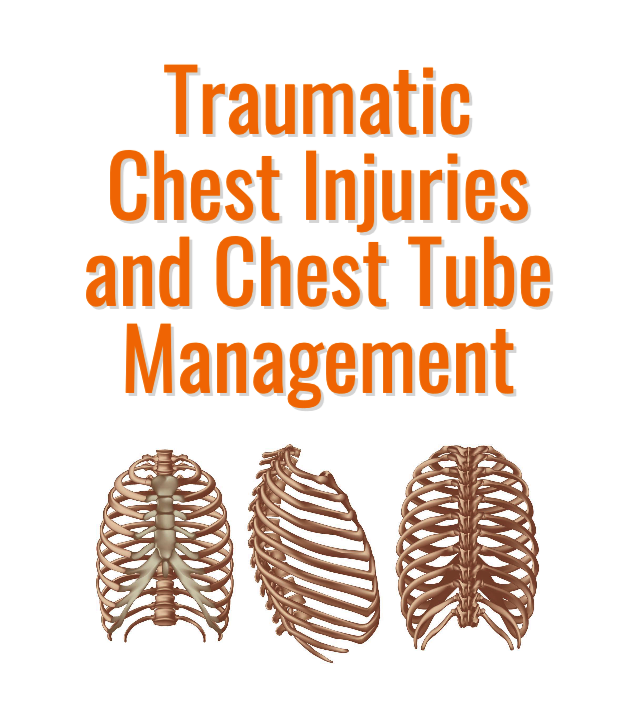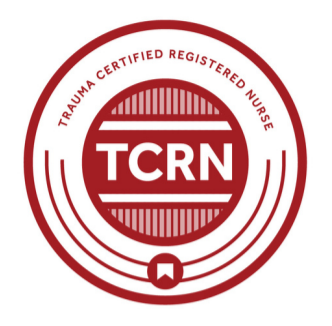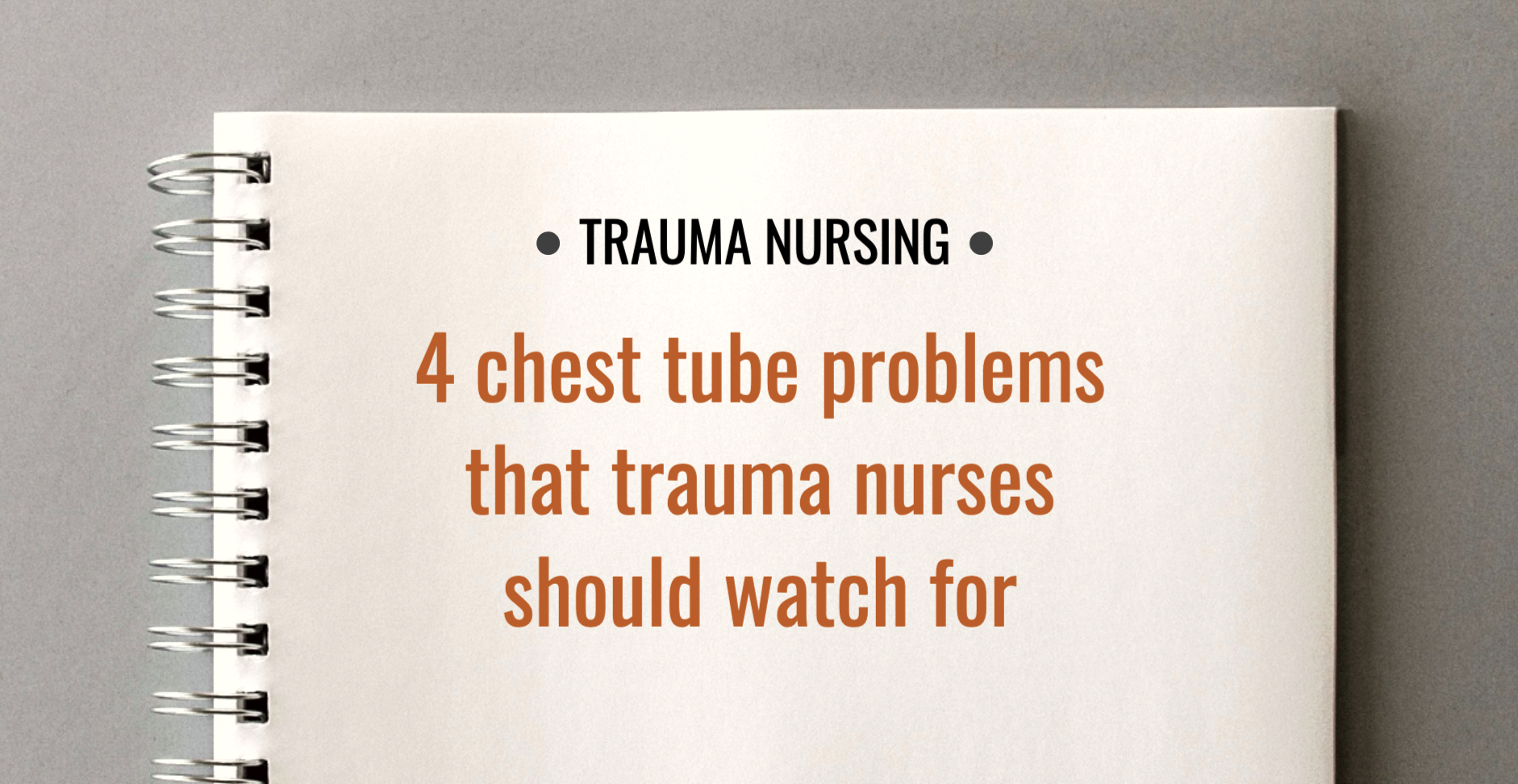Chest injuries can lead to the loss of negative pressure within the pleural space. This causes the lung to collapse and can lead to respiratory distress and life-threatening complications.
For many patients with thoracic trauma, a chest tube is inserted in the pleural space in order to remove fluid and air. The chest tube is connected to a chest drainage system (CDS).
Trauma and emergency nurses should know how to respond to common problems that can develop in patients with a chest tube and a CDS. Following are four problems to understand and watch for.
1. Poor drainage through the chest tubing
Poor drainage through the chest tube can allow the backflow of fluid from the CDS into the chest. It can also compromise the creation of negative pressure within the pleural space.
In general, make sure the CDS is positioned below the patient’s chest. This will facilitate drainage, prevent backflow and maintain the water seal within the CDS unit.
Check all tubing to make sure it is not kinked, pinched in a bedrail or inadvertently clamped. In addition, make sure the tubing is not obstructed by dependent fluid or a clot.
However, never “strip” or “milk” the tubing. Stripping is pinching the tube at one end and then sliding the pinched fingers down the length of the tubing. Milking is squeezing the tube at one end, with a succession of squeezes down the length of the tubing. Both can cause excessive negative pressure in the water seal chamber and may cause tissue to be pulled into the chest tube inside the chest. Neither technique has been shown to improve chest drainage.
2. Air leaks in the system
Bubbling in the water seal chamber of the CDS may be (a) an expected pathophysiology of lung injury or (b) an indication of a leak in the system.
- In general, intermittent air leaks should be expected until the lung fully expands. Minor leaks can cause intermittent bubbling when the patient coughs (expiration). They may also correspond with respirations, occurring with inspiration.
- Constant bubbling may be caused by a larger leak resulting from a more serious lung injury. However, constant bubbling may also be seen in a patient on PPV with positive end-expiratory pressure (PEEP).
If the bubbling in the water seal chamber is constant, consider an air leak in the system. To troubleshoot the bubbling:
- Make sure all connections are taped and tightly secured.
- Use a padded clamp to identify the location of possible leaks in the tubing, the insertion site and the patient.
- Check to make sure the tube remains properly inserted within the chest and that the occlusive dressing is intact.
3. Infection at the insertion site
An infection at the chest tube insertion site can spread to the pleural space. The nursing assessment of the chest tube patient (which should occur at least every 2 hours) should include inspection of the incision and the drainage for signs of infection.
To prevent infection:
- Observe good hand hygiene and disinfect the chest wall when the chest tube is inserted.
- Maintain a sterile field when applying the dressing. Apply a petrolatum-impregnated gauze around the tube, cover it with a gauze dressing and tape it down. The goal is to secure the tube and close the site with an occlusive dressing. Secure the tube to the chest in a position that aligns as much as possible with the “resting position” of the tube outside the chest.
- Change dressings regularly according to your hospital’s policy.
In addition, ensure that the CDS does not become disconnected. If the chest tube is accidentally disconnected from the CDS and the end of the patient tubing is contaminated, place the end of the chest tube in a 250 mL bottle of sterile water or saline to create a water seal while a new CDS is retrieved. If ends of the CDS become contaminated, change the unit.
4. Bleeding and massive hemothorax
If bleeding is occurring at the site of incision, apply direct pressure. Consider the need for coagulopathy studies.
Monitor the blood collecting in the CDS. Document blood output according to your hospital’s policy, and report any sudden increase in output to the physician. Watch for signs of hemothorax, which is the accumulation of blood within the pleural space.
A massive hemothorax is defined as 1500 mL output initially or 200 mL an hour for 2 to 4 hours. Signs include respiratory distress, absent or severely diminished lung sounds, hypotension, and flat neck veins.



